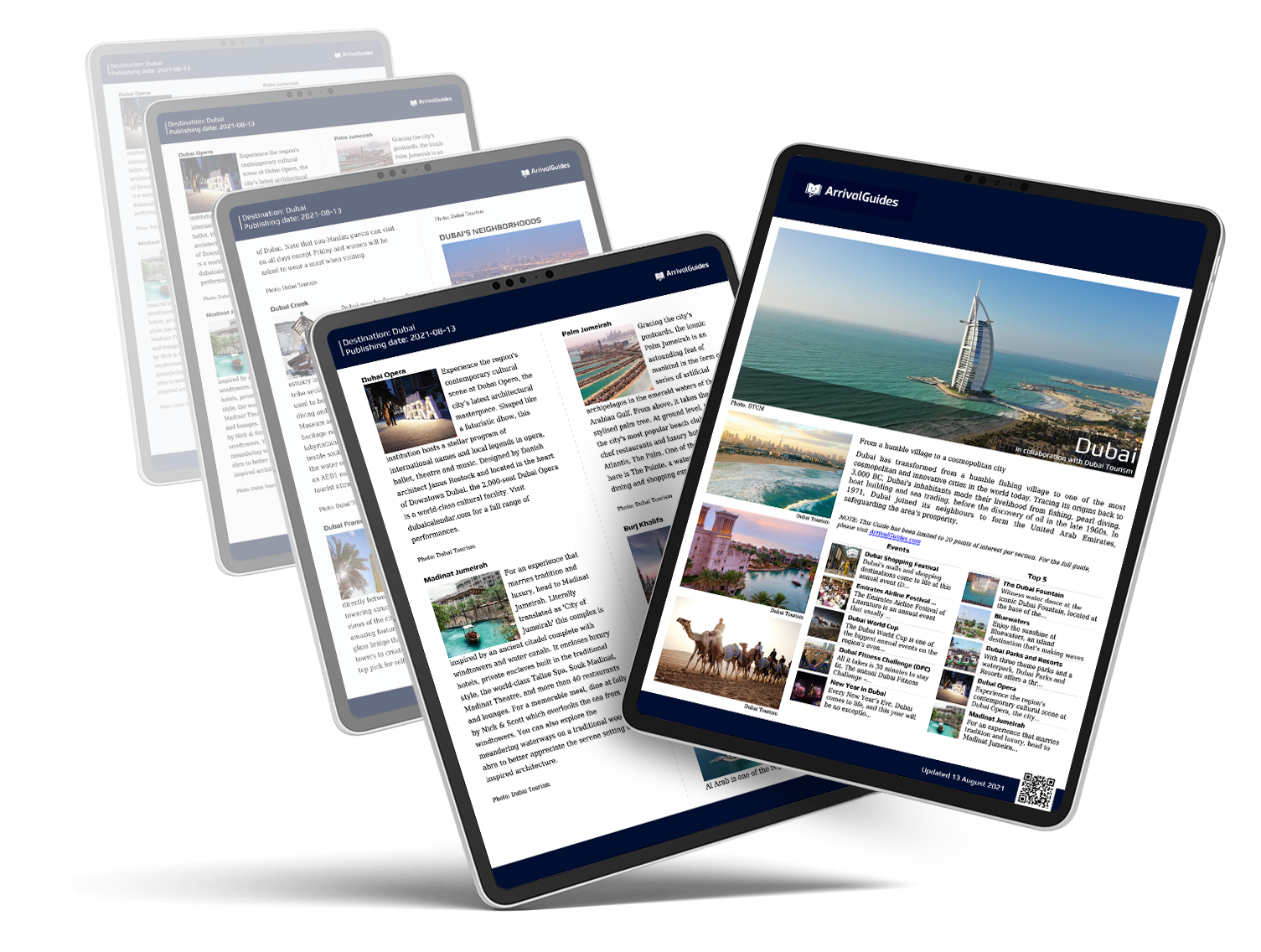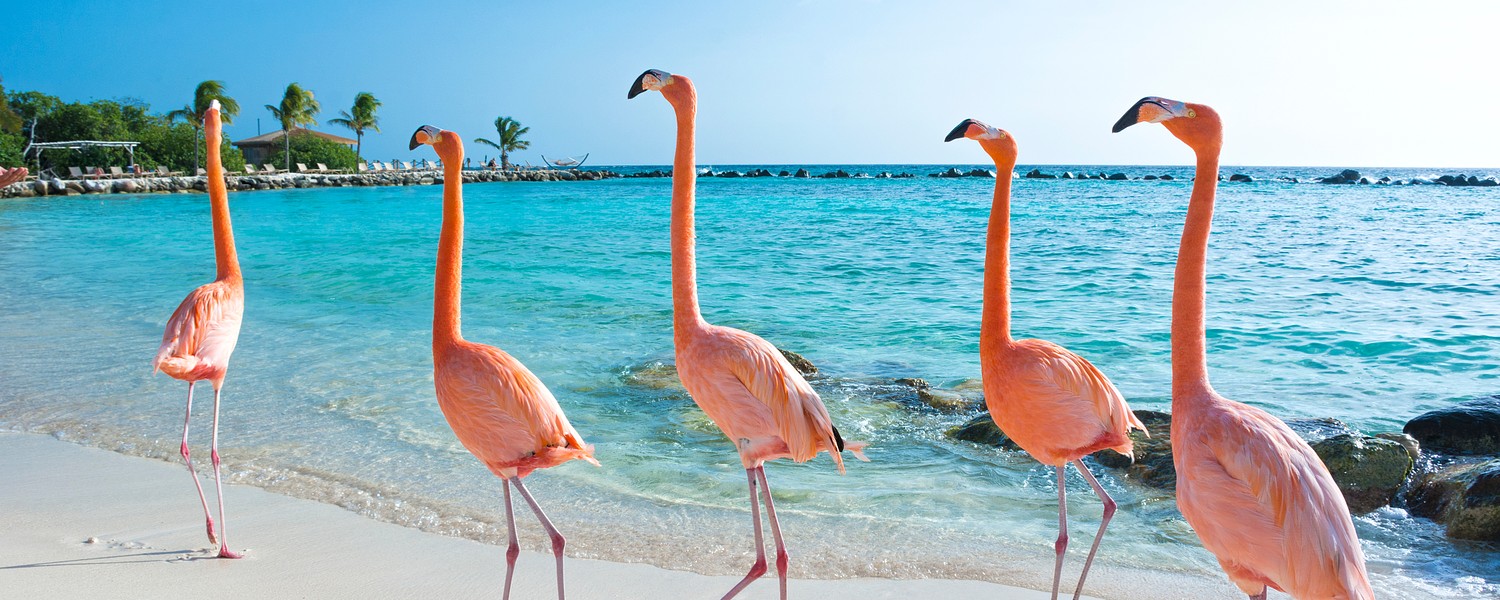
Provided by:
Natalia Barsukova/Shutterstock.com

Our travel guides are free to read and explore online. If you want to get your own copy, the full travel guide for this destination is available to you offline* to bring along anywhere or print for your trip.
*this will be downloaded as a PDF.Price
€4,95
The Island
The guide was updated:
Sheltered as it is from oceanic winds and tides, the northwestern area of Aruba has become a holiday haven, perfected by the tourism industry. Whether swimming in the calm blue water, snorkelling, venturing to do some water sports, or joining beautiful sunset cruises, it's quite difficult to get bored there. Funny flamingos and refreshing divi trees are characteristic parts of the scenery. You'll find the best entertainment in the popular areas of Palm and Eagle Beach, and in Oranjestad, the charming and compact capital city.
When looking for accommodation in this popular area, you have two main options. The high rise hotels are huge beachfront palaces located in the busiest and most central position. One mile north from there, low rise hotels offer a more private and relaxed atmosphere.
A visit to the more genuine town of San Nicolas, in the southern area, will be rewarded with hidden food gems and beautiful views. Reach the wind-swept Eastern coast and you'll find yourself in an undeveloped natural treasure. Of course, this wilderness can be explored with a plethora of guided tours.
Aruba has a fascinating history of pre-Columbian tribes, colonisation and peoples' encounters. Arawak Amerindians came to the island around 1,000 BC and stayed for millennia; traces of their presence are left in the ancient wall drawings of Fontein Cave. After being discovered by European explorers, the island was colonised by Spain. Fortunately, it was never big on slave trade, because the climate was too dry for plantation settlements. The Netherlands took over in the 17th century and ruled until the first free elections in 1986. Oranjestad preserves beautifully restored Dutch architecture from the Colonial period.
When looking for accommodation in this popular area, you have two main options. The high rise hotels are huge beachfront palaces located in the busiest and most central position. One mile north from there, low rise hotels offer a more private and relaxed atmosphere.
A visit to the more genuine town of San Nicolas, in the southern area, will be rewarded with hidden food gems and beautiful views. Reach the wind-swept Eastern coast and you'll find yourself in an undeveloped natural treasure. Of course, this wilderness can be explored with a plethora of guided tours.
Aruba has a fascinating history of pre-Columbian tribes, colonisation and peoples' encounters. Arawak Amerindians came to the island around 1,000 BC and stayed for millennia; traces of their presence are left in the ancient wall drawings of Fontein Cave. After being discovered by European explorers, the island was colonised by Spain. Fortunately, it was never big on slave trade, because the climate was too dry for plantation settlements. The Netherlands took over in the 17th century and ruled until the first free elections in 1986. Oranjestad preserves beautifully restored Dutch architecture from the Colonial period.


